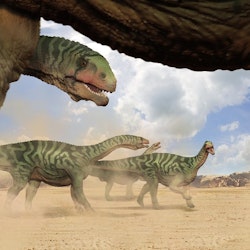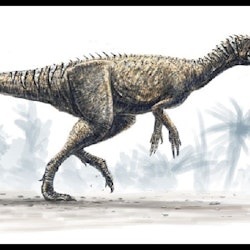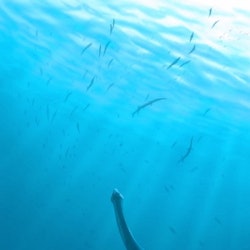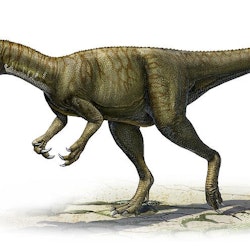Want to see other dinosaurs besides the ones from Triassic? See all dinosaurs.
Search: or pick one for me
Some 200 million years ago, Earth had a single landmass which we call Pangaea. To the west was the Panthalassic Ocean; to the east, The Tethys. In those seas, creatures had evolved into amphibians, then reptiles which swarmed over the land. They had brought the moist nurturing sea with them, in the form of the egg, and they thrived. These Triassic creatures included archosaurs and thecodonts, ancestors of the great dinosaurs.
Racked by plate tectonics, Pangaea slowly began to break into daughter continents; the Americas, Africa, Asia, Australia, Antarctica. The Tethys flooded across what is now the Mediterranean Basin to connect with the beginnings of the Atlantic Ocean. Then the planet was dealt a blow which wiped out the majority of reptile life forms. After the Triassic extinction, the Earth, with all its rich food sources, was wide open to fast-evolving survivor species.
Dinosaurs came to rule the earth, in a reign which was destined to last for 150 million years. First came nothosaurs and placodonts as well as early examples of crocodiles, whose descendants are thriving today. Early saurians filled the earth and evolved into forms which exploited every possible ecological niche, on land, sea and in the air. But the golden age of the dinosaur was yet to come, when early saurischian gene patterns would lead to the majesty of Tyrannosaurus Rex.



